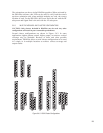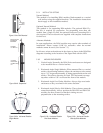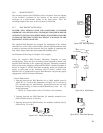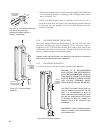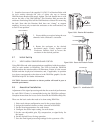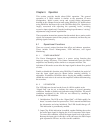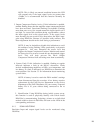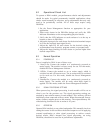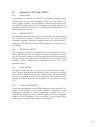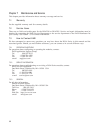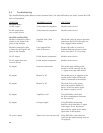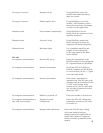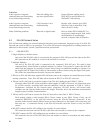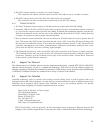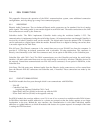
6.4 Operational ‘DOS’ and ‘DONT'S’
6.4.1 EQUALIZATION
If equalization is required for tailoring the frequency response during
performances, use an external equalizer such as a good quality 1/3
octave graphic equalizer, for this purpose. Connect the equalizer inline
with the DSAi input signal. DSA’s user input equalization, adjusted via
DSAPilot, should be used only for overall tuning adjustments made
during initial system set-up.
6.4.2 MAXIMUM OUTPUT
At the highest usable operating levels, the LED Indicator on the module
and in the level meters in DSAPilot should show no more than
occasional clipping. Occasional clipping means the LED indicator, if
enabled, and DSAPilot meter will indicate clipping at most once every
few seconds.
6.4.3 FREQUENCY CONTENT
Do not attempt to boost low frequencies below about 100 Hz. The 4 in
drivers DSAi module are not designed to replace subwoofers if strong,
very low frequency response is needed. Boosts below 100 Hz can greatly
increase the cone excursion and can use up much of the amplifier power
available. These conditions can significantly reduce the overall
maximum output.
6.4.4 INPUT LIMITING
The input limiting should not be used for driver protection. There is
fixed, internal compression and limiting to help prevent driver damage
from excessive amplifier output levels. These limiters will automatically
activate in the presence of excessive signals. The LED indicator can be
enabled to indicate activation of the protection circuits. See Section
6.1.2.
6.4.5 DSAPILOT ADJUSTMENTS
Do not make adjustments using DSAPilot during normal operation. The
reason is that changes to the DSAi module’s electronics requires
successively updating all internal parameters. Because there is a
complete DSP engine for each transducer, updates can take a noticeable
amount of time. Depending on the magnitude of any changes, sonic
artifacts may result while the updates are taking place.
31



